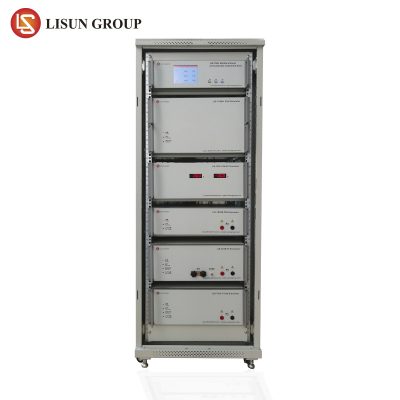

In recent years, the automotive industry in China has developed rapidly. However, progress in automotive electromagnetic compatibility (EMC) testing standards and regulations has lagged. Nevertheless, recent updates and new standards demonstrate that China is quickly advancing in standard development to keep pace with the automotive industry’s growth.
Importance of Automotive EMC
With technological advancement and the rapid growth of the automotive industry, the number of in-vehicle electronic devices has increased. Consequently, EMC design standards and regulations have become crucial. Modern vehicles are equipped with various electronic devices, such as multimedia entertainment systems, Bluetooth communication, satellite navigation, braking systems, and airbags. These systems may emit interference signals or malfunction due to high sensitivity when exposed to strong interference zones. Such malfunctions can range from minor inconveniences to severe accidents, posing a threat to life safety.
Interference (EMI) and Immunity (EMS) Testing
Automotive electronic EMC includes two main categories of testing: interference testing (EMI) and immunity testing (EMS). Each category involves measurements of both radiated and conducted emissions.
EMI Testing:
Radiated Interference: Measures the electromagnetic waves emitted by in-vehicle electronic devices during operation to ensure they do not interfere with other electronic equipment.
Conducted Interference: Measures the electromagnetic interference conducted through power lines or other connections from in-vehicle electronic devices, ensuring they do not adversely affect the power network and connected devices.
EMS Testing:
Radiated Immunity: Assesses the resistance of in-vehicle electronic devices to external electromagnetic interference, ensuring stable operation in complex electromagnetic environments.
Conducted Immunity: Evaluates the resistance of in-vehicle electronic devices to electromagnetic interference conducted through power lines or other connections, ensuring normal operation under interference conditions.
Updates in Standards and Regulations
In recent years, the focus on automotive EMC has increased both domestically and internationally, with various standards and regulations continuously updated to keep up with modern automotive technology.
EMS-ISO7637 Multifunctional Immunity Test System For Automotive Electronics
Key Standards:
• International Standards: ISO 11451 and ISO 11452 series provide detailed regulations for radiated and immunity testing of entire vehicles and in-vehicle electronic devices, respectively.
• Domestic Standards: National standards such as GB/T 18655 and GB/T 17619 offer specific technical requirements and testing methods for automotive EMC testing.
The primary standards in the automotive and in-vehicle electronic equipment EMC testing field include:
• International Automotive EMC Standards: Such as ISO and CISPR standards.
• European Automotive EMC Standards
• American SAE EMC Standards: Promulgated by the Society of Automotive Engineers (SAE).
• Automotive OEM EMC Standards: Prominent automotive manufacturers have their EMC testing standards and regulations.
• Given the development trends in standards and regulations, as well as the EMC performance requirements for automotive and in-vehicle electronic equipment, ISO and CISPR standards have become increasingly important. The following are key testing standards and regulations, along with solutions provided by Lisun Electronics Company for clients.
During vehicle operation, electromagnetic disturbances can enter the power and signal lines of in-vehicle electronic devices through conduction and coupling, leading to reduced functionality, temporary faults, or even damage. The EMS-ISO7637 automotive electronic immunity testing system simulates various typical electromagnetic disturbances generated during vehicle operation. It can also simulate changes in the vehicle’s power supply during engine start-up, switching electronic devices on and off, and battery charge-discharge states. The waveforms generated by EMS-ISO7637 meet the requirements for automotive electronic immunity testing for most automotive manufacturers.
Standards:
• ISO7637-2: “Road Vehicles – Electrical Disturbances from Conducted and Coupled Transients – Part 2: Electrical Transient Conducted along Supply Lines.”
• ISO7637-1: “Road Vehicles – Electrical Disturbances from Conducted and Coupled Transients – Part 1: Definitions and General Considerations.”
• ISO16750-2:2023: “Road Vehicles – Environmental Conditions and Testing for Electrical and Electronic Equipment – Part 2: Electrical Loads.”
• GB/T 21437.2: “Road Vehicles – Test Methods for Electrical Disturbances from Conducted and Coupled Transients – Part 2: Electrical Transient Conduction along Supply Lines.”
Technical Features:
• Comprehensive Waveforms: The system includes all waveforms required by ISO7637-2 (with optional support for ISO16750-2:2023).
• User Interface: Features a large LCD color display and a modular mainframe architecture for high intelligence and easy operation, allowing for future upgrades.
• Voltage Support: Capable of testing 12V/24V automotive electronics for immunity.
• Test Capacity: Supports up to DC 80V/100A with unified port output.
• Connectivity: Equipped with various host interfaces and compatible with Lisun’s proprietary software for computer-based testing.
• Software Flexibility: Includes all relevant standards with a customizable standard library for users to add and update standards.
The automotive electronic immunity testing system is a crucial tool for evaluating the electromagnetic compatibility of automotive electronics, ensuring that vehicles meet stringent safety and performance standards in an increasingly complex electromagnetic environment. https://www.lisungroup.com/news/technology-news/importance-of-automotive-electronic-immunity-testing-system-in-emc-testing.html


Comments
Post a Comment